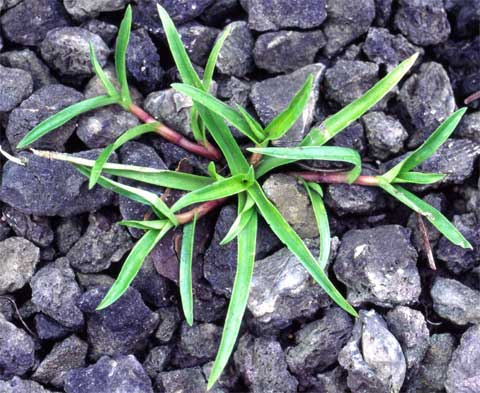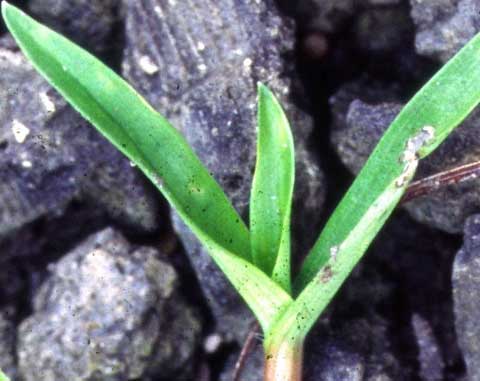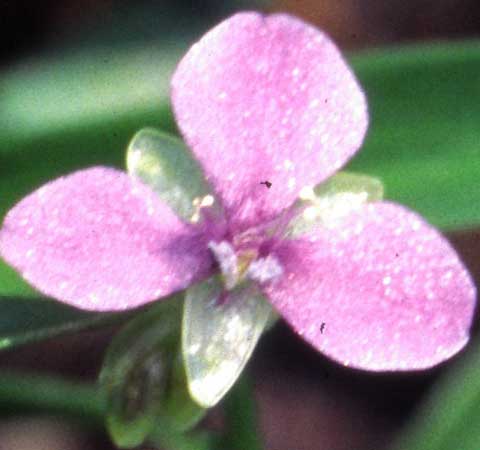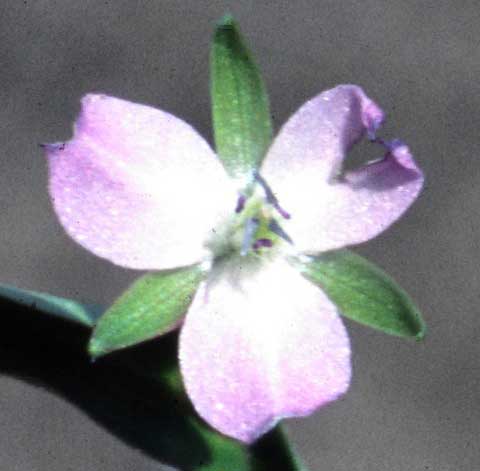

Murdannia nudiflora habit [Top]

Murdannia nudiflora leaves [Top]

Murdannia nudiflora flower [Top]

Murdannia keisak flower [Top]
P
G
P
F-G
F
P
F
F
F-G
?
P
P
P
A prostrate, summer annual in the spiderwort (dayflower) family, doveweed (Commelinaceae) often forms a dense mat. This weed germinates and grows best in hot, wet weather with most seedlings emerging late May through August. Plants flower, and then die after frost. Leaves are 2 to 5 inches long, about � to � inch wide, pointed, with parallel veins; alternate and clasping the stem with a sheath. When very young, this plant can easily be confused with a grass. The stems are succulent, trailing, and root at the nodes. Purplish 3-petalled flowers occur in loose groups from mid-summer to fall. Doveweed is propagated exclusively by seeds, and plants may produce several generations in one season. Infestations generally begin in drainage ditches or low spots where water stands. Doveweed is difficult to control. A similar species, marsh dayflower (Murdannia keisak), is less common in nurseries but grows in similar habitats. Marsh dayflower tends to be larger and more vigorous than doveweed. Also, the sepals are shorter than the petals in doveweed but in marsh dayflower the sepals are about as long as the petals. Few herbicides control this weed. [TOP]